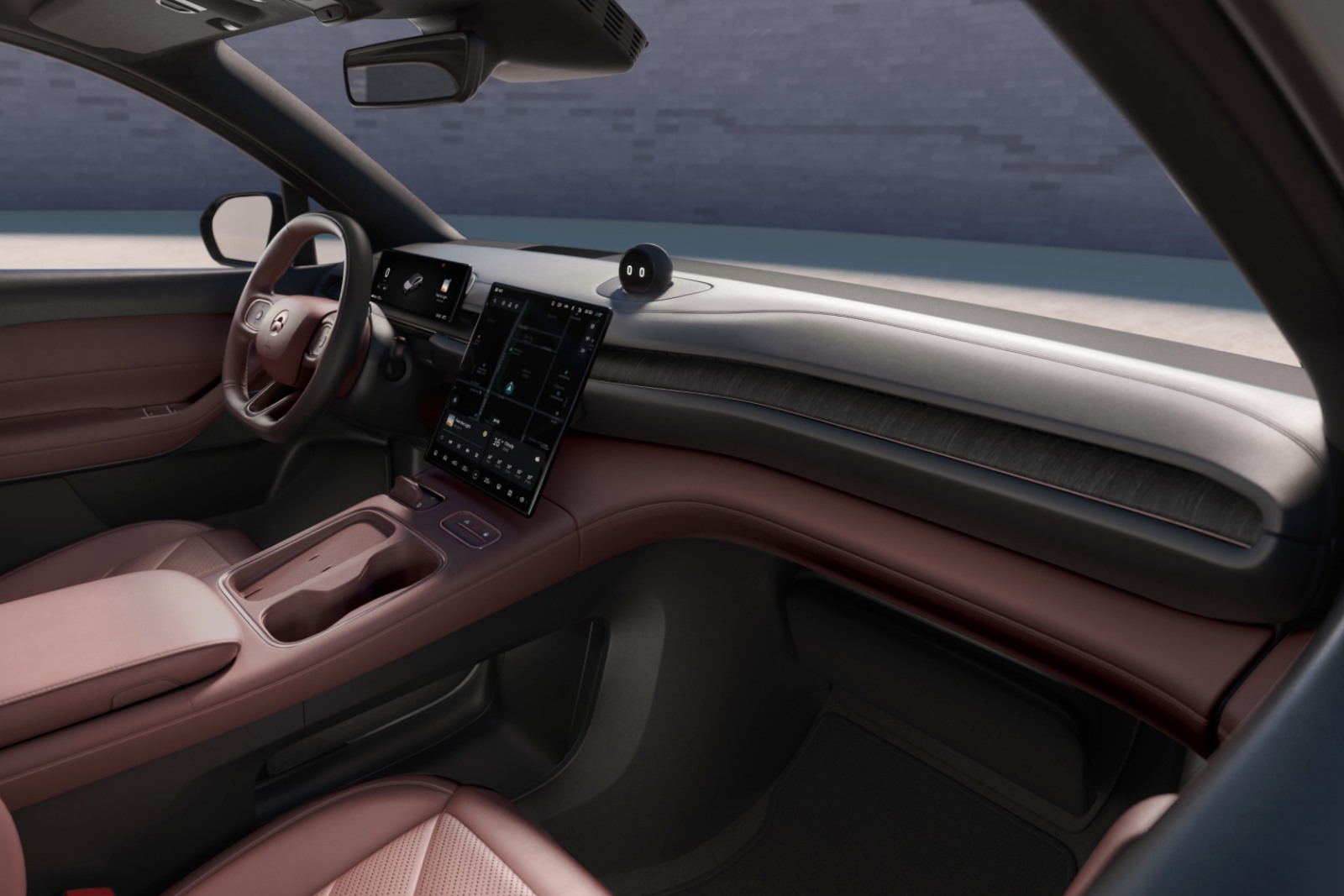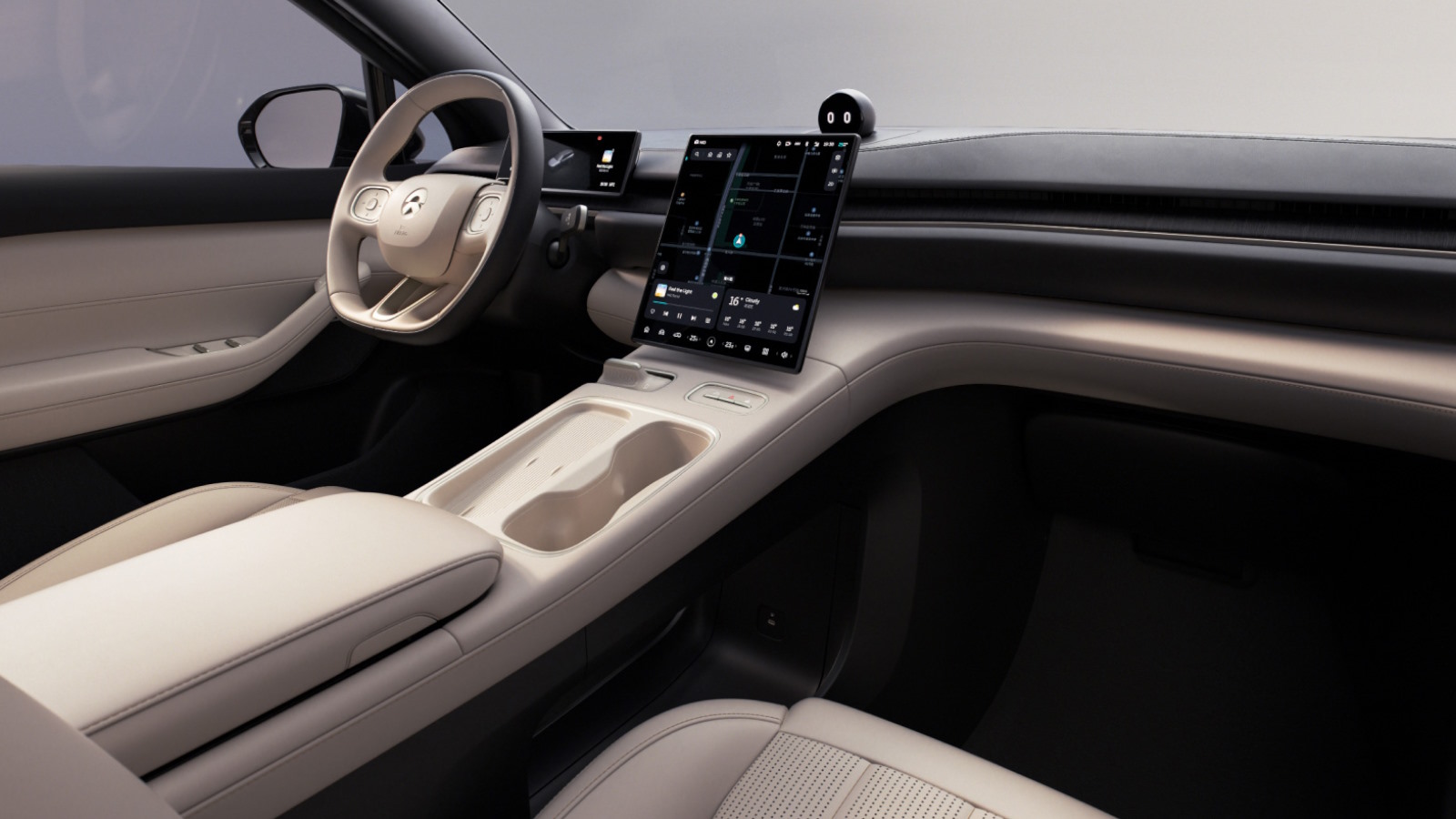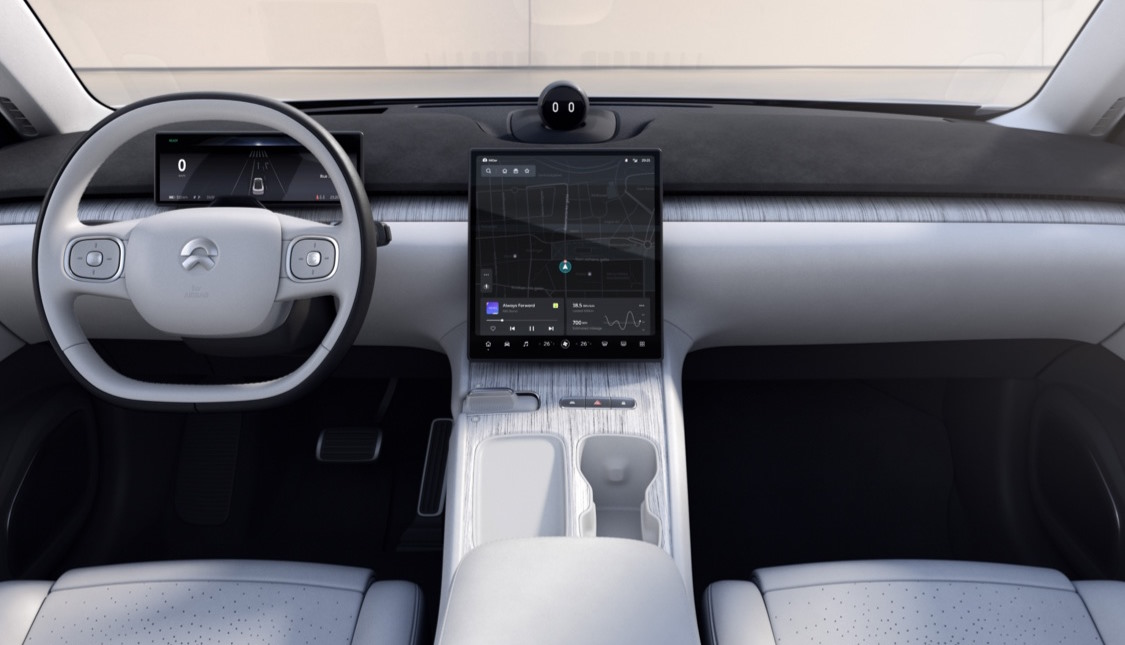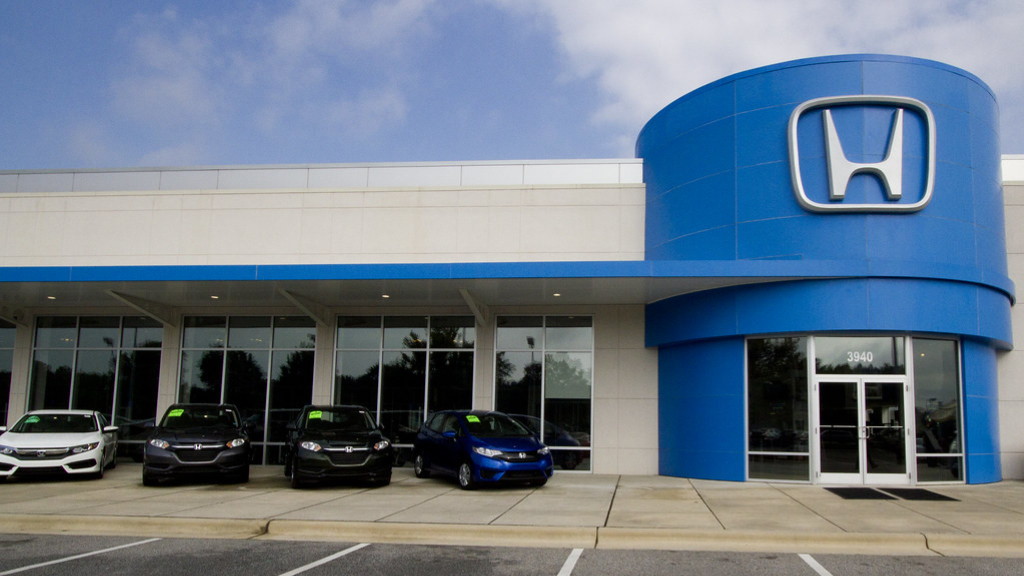I feel like I’ve seen this one before. Another Chinese car manufacturer is reportedly making big plans for America, and it’s an EV innovator. Nio has a reasonably appealing lineup of electric cars and crossovers, the unique advantage of battery swapping, and some seriously impressive tech. However, it also has several things working against it, and I’m not just talking about the federal EV incentive sourcing and production requirements.
Oh, and speaking of EVs, the standard story format for electric vehicle fires goes something like this: yadda yadda fire, yadda yadda thermal runaway, yadda yadda heaps of water, yadda yadda fears of re-ignition. It’s been covered to death, to the point where it isn’t novel. Soak the thing like one of those capsule dinosaurs you got in loot bags as a kid, keep it away from stuff, and everyone will probably be fine. However, what happens when a whole electric vehicle factory catches fire? Well, a city in Quebec is reportedly grappling with just that. All this and more in today’s edition of The Morning Dump.
Chinese EV Maker Nio Wants To Sell Cars In America

In America’s shift to electrification, glory, riches, and market domination is all up for grabs. Who could blame Chinese EV makers for wanting part of it? Reuters reports that Chinese electric automaker Nio is interested in entering the American market come 2025, and is exploring all sorts of avenues to do so.
Speaking at Reuters Events Automotive USA 2023 conference, Ganesh Iyer, chief executive officer of Nio USA, said the company is considering “any kind of partnerships” in North America.
This comes after quotes from NIO’s US CEO saying the brand wants to enter the U.S. market. From Asian Market-focused website Nikkei Asia:
Nio will import premium electric cars made in China to the U.S. rather than attempt to qualify for tax incentives by setting up local production, the Chinese automaker said.
Ganesh Iyer, the EV maker’s CEO for the U.S., laid out the vision for the American market at the NextChina Conference hosted by the China Project news outlet in New York on Thursday. Nio aims to sell its first car in the U.S. by 2025 as part of a goal to expand to 25 countries and regions.
We’ve heard similar rhetoric from Chinese manufacturers before, but if Nio defies the odds, what sorts of vehicles would it sell over here? Or rather, what Nio vehicles might sell well in America?

The first one that springs to mind is the Nio ES8, since it’s six-seat three-row crossover that could slide into a popular market segment that’s underutilized in the EV space. After all, if people are going nuts for the Kia EV9, another three-row option could scoop up plenty of sales.

With integrated ottomans for the first- and second-row seats, the interior of the ES8 looks like a deeply comfy place to be. Also, shoutout to Nio for installing a proper center console in the second row, rather than some basic, flimsy piece of plastic.

Another option is the Nio EC6, a two-row coupe crossover that should get the people going. Love them or loathe them, crossover coupes are popular, and with a 70 kWh or 100 kWh battery pack, this thing should slide into the popular EV crossover market with a style-based USP.

There’s plenty of layering going on inside the EC6, and some nice usage of tone-matched plastic inserts to blend with contrast colors. The floating center console hides a massive storage area underneath it too, perfect for bags and whatnot.

Alright, so maybe you don’t want something as deeply unserious as a coupe crossover but still desire something with the EC6’s footprint. No worries, Nio also offers the ES6, a far more conventional electric crossover.

Unsurprisingly, the cabin of the ES6 is pretty much identical to the one in the EC6, but it’s still a relatively handsome place with a unique giant paddle in the console. Like all of Nio’s vehicles, the ES6 supports battery swapping, a complex process that could actually be useful in North America, given our massive distances.

The Nio ET7 isn’t massively exciting to look at, but it should go like the dickens. With up to 644 horsepower on tap, figure a zero-to-62 mph time of 3.8 seconds, all while being tantalized by impressive technology from a 23-speaker 1,000-watt sound system to a semi-autonomous driving system with built-in LiDAR.

As the ET7 is Nio’s flagship sedan, it shouldn’t be surprising that the interior is covered in neat stuff. The dashtop is sueded, the wood is white, and the steering wheel is an unusual two-spoke design. Granted, the interior styling is terminally boring, but Tesla’s doing the same minimalistic thing and seems to be selling cars just fine.

Alright, so the ET7 might not get enthusiasts’ pulses racing, but here’s something a little more enticing. The Nio ET5T is an electric station wagon with up to 480 horsepower. Zero-to-62 mph in the top trim? A cool four seconds flat. Oh, and here’s something even more interesting: The 62 mph to zero braking distance is claimed to be a scant 111.2 feet.

The ET5T would actually be cool to have in America, but Nio faces an uphill battle due to consumer sentiments, market positioning, and even historical results.
Despite the frosty state of American-Chinese relations, history has shown that Americans will buy anything if it’s cheap and decent enough. After all, Japanese cars made headway in America despite anti-Japanese sentiments in the decades following World War II, partly because the cars sipped fuel, were well-built, and offered decent value. However, Nio isn’t exactly the cheapest brand on the block, and once you roll the costs of homologating vehicles for the U.S. market into every car sold and subtract the federal EV incentives because China-built vehicles wouldn’t qualify for them, pricing might not be competitive enough to sustain sales.
Then there’s the nearly impeccable track record of Chinese automakers aspiring to enter the American market, then pulling out. Aside from a few E6 trial cars, BYD’s passenger car lineup never made it to America. Chery wanted to come to America but didn’t, and neither did Brilliance or SAIC. Sure, several automakers have sold and currently sell Chinese-built cars in America, but these are Western automakers with the know-how, distribution networks, and brand recognition to sell in America. The bottom line? Don’t be surprised if Nio’s announcement is a nothingburger.
Who Cleans Up When An Electric Vehicle Factory Catches Fire?

The uniqueness of electric vehicle fires is fairly well-known, but here’s a hypothetical nobody saw coming: What if an electric vehicle factory catches fire? Sure, it sounds stupid, but that’s apparently exactly what just happened to an electric tractor plant in Quebec. Radio-Canada, the francophone arm of the CBC, reports that an Elmec EVduty factory that built autonomous electric Erion tractor prototypes burnt to a crisp on Tuesday, and residents nearby are already worried about the fallout. Before I go any further, it’s worth noting that a cause for the fire hasn’t been announced yet, but as Radio-Canada details, the aftermath is anything but settling.
The fire that destroyed the Elmec EVduty factory on Tuesday in the Carrefour 40-55 industrial park in Trois-Rivières threw debris several kilometers. Some of this debris is now found in residential areas, where citizens are wondering how to get rid of it while worrying about their potential toxicity and the lack of communication from the authorities, who are passing the buck.
According to Radio-Canada, nobody has officially stated whether or not the debris is toxic, and residents are concerned that plans for debris removal haven’t been announced yet. While industrial fires in general aren’t exactly a recent development, the Elmec EVduty fire is a new frontier that the electric transition will have to reckon with. Lithium battery fires are a bastard to put out, but when a single EV goes up in smoke and its battery pack enters thermal runaway, the thermal event is relatively localized. Scale that up, though, and things can get a bit less local.
It’s just common sense that we should have a series of best practices and an environmental cleanup regimen for the unlikely event that an electric vehicle factory catches fire. Not only would a plan assuage fears of residents living near these plants, it would let governments act quickly should something similar happen again. I wouldn’t be surprised if whatever methods come out of this incident become standard practice across much of North America, given the rarity of such an incident. Whatever happens, we’ll be watching this one closely.
Used Car Values Continue To Fall

The great unwind continues. Thanks to used car wholesale value declines in October, the Manheim Index of used car wholesale values now sits at the lowest it’s been since April of 2021, wiping out the slight uptick in values we saw during the UAW strike. While Matt delved into vehicle supply on yesterday’s Morning Dump, I’d like to take a minute to talk about pricing, as that’s where deals are made and lost.
While retail pricing typically lags wholesale pricing by a number of weeks, there’s some data out there suggesting a lopsidedness between what dealers are paying for cars at auction and what consumers are paying for cars at dealers, in that some savings aren’t being passed on. Surprise, surprise. As per the Manheim Index:
Assessing retail vehicle sales based on observed changes in advertised units tracked by vAuto, we initially estimate that used-vehicle retail sales in October were down 2% compared to September, and the year-over-year comparison with 2022 worsened again. Used retail sales are estimated to be down 4% year over year in October. The average retail listing price for a used vehicle declined 0.7% over the last four weeks.
On a more positive note, Cox Automotive, the people behind the Manheim Index, isn’t the only analytics firm seeing declines. Black Book saw higher than expected seasonal depreciation last week, with a weekly price decline of 0.95 percent compared to the average this year of 0.67 percent. At this point, there’s nothing indicating that the slide won’t continue, so sit back and relax, because what goes up must always come down.
Choppy Waters For Polestar

As mainstream manufacturers brace for an EV demand slowdown, perhaps few sold in America are quite as vulnerable as Polestar. After all, this is a brand that isn’t a startup, yet it has zero combustion-powered cars in its lineup to fall back on, isn’t a low-cost brand, and sports a dealer network that isn’t exactly huge. Indeed, Reuters reports that Polestar has downgraded both its sales and margin expectations for 2023:
Polestar, which operates in 27 markets globally, said it would now deliver about 60,000 vehicles this year, down from between 60,000 to 70,000. It had reiterated that forecast just last month after slashing the target in May from the 80,000 it had estimated earlier.
The U.S.-listed company, founded by China’s Geely and Volvo Cars, also said it would achieve a gross margin of 2% in 2023, down from its prior 4% forecast.
Is there light at the end of the tunnel? Both Polestar and shareholder Volvo seem to think so, with the latter manufacturer issuing a media release with some lofty claims for the 2025 fiscal year.
In light of a fast-changing operating environment, Polestar has introduced a strengthened business plan that reorients a path to profitability by prioritising margin progression over volume. For the fiscal year 2025, Polestar is targeting a gross margin in the high teens with a total annual volume of approximately 155,000-165,000 cars. This is expected to be achieved through a richer product mix, with four models in production, reduced cost structure and refocused approach to key markets including a new joint venture in China and measures to improve profitability in the US business. Polestar has already implemented cost reduction measures announced earlier this year around headcount reductions and continues to advance active cost management efforts.
So, let’s check the match here. Polestar is looking to more than double its volume and roughly nonuple its margins in two fiscal years? I know the Polestar 3 crossover will go a long way to helping sales, seeing as many customers aren’t seeking sedan-shaped things anymore, but those are some wild expectations.
Your Driver Is On Their Way

If you’ve booked a taxi lately, you’re probably well aware that the current Toyota Camry is, well, old. Six years old, to be precise, which means it’s just about due for replacement. Thankfully, a new one is right around the corner, and Toyota has dropped a hint that should get snowbelt dwellers absolutely stoked: It will be available as an all-wheel-drive hybrid.
With a new Honda Accord already on sale and a refreshed Hyundai Sonata incoming for 2024, now’s the perfect time for Toyota to unveil a new, more competitive Camry. If you’re the sort of person who’s into midsize sedans, set an alarm for Nov. 14, because that’s when we’ll see all of the new Camry instead of just a cropped-in look at the trunk lid.
Your Turn
The Toyota Camry is a popular enough car that virtually everyone has some sort of Camry story. Whether it was the cheap sedan that didn’t quit on you, the dependable family hauler, or your first experience with a hybrid powertrain in a normal-looking form, I’d love to hear your Camry story.
(Photo credits: Erion, yonkershonda licensed under CC BY-SA 2.0, Polestar, Toyota)


We inherited a first-gen Solara coupe, gave it to a family friend who totaled it in spectacular fashion and walked away uninjured. It did its job!
Why we gave away the Solara and kept the also-free Grand Cherokee we had is still beyond my comprehension, but Cash for Clunkers took care of that Jeep.